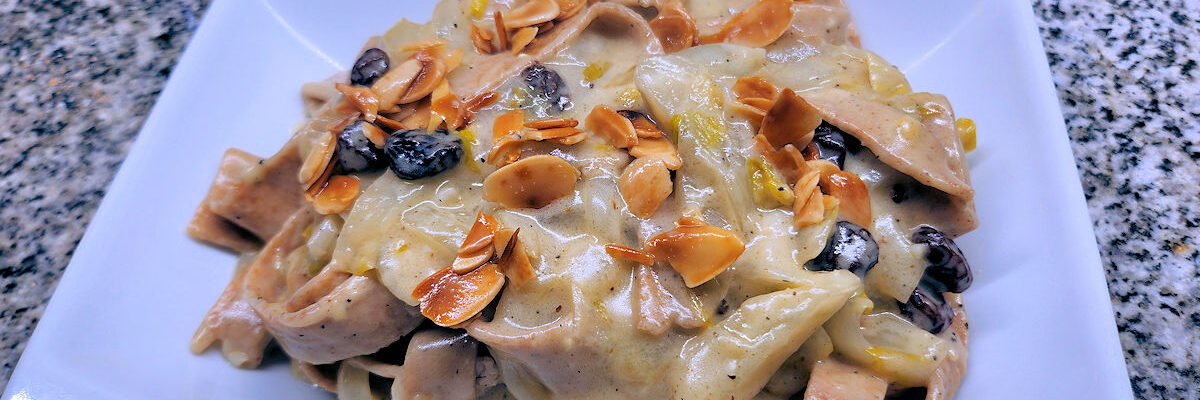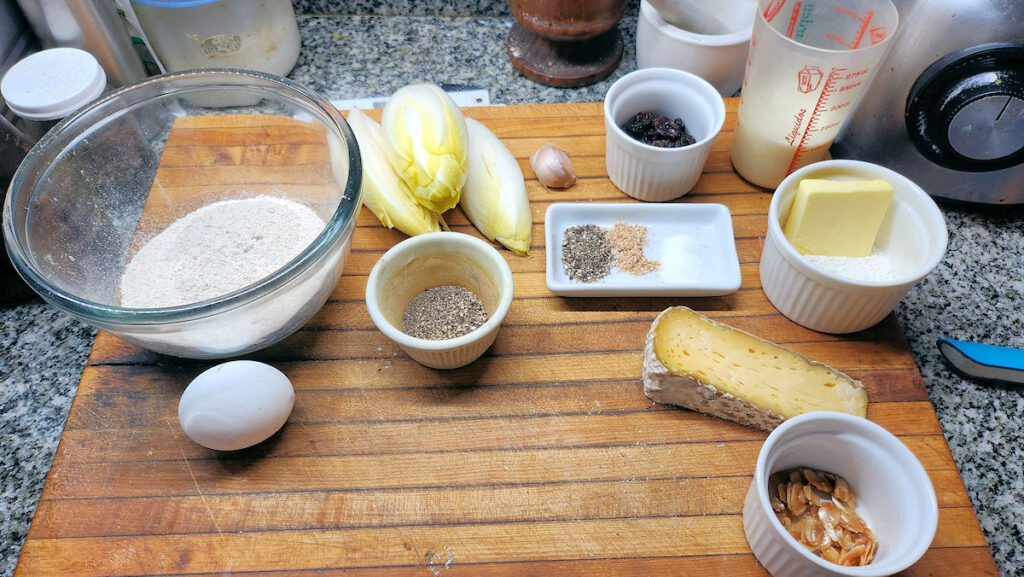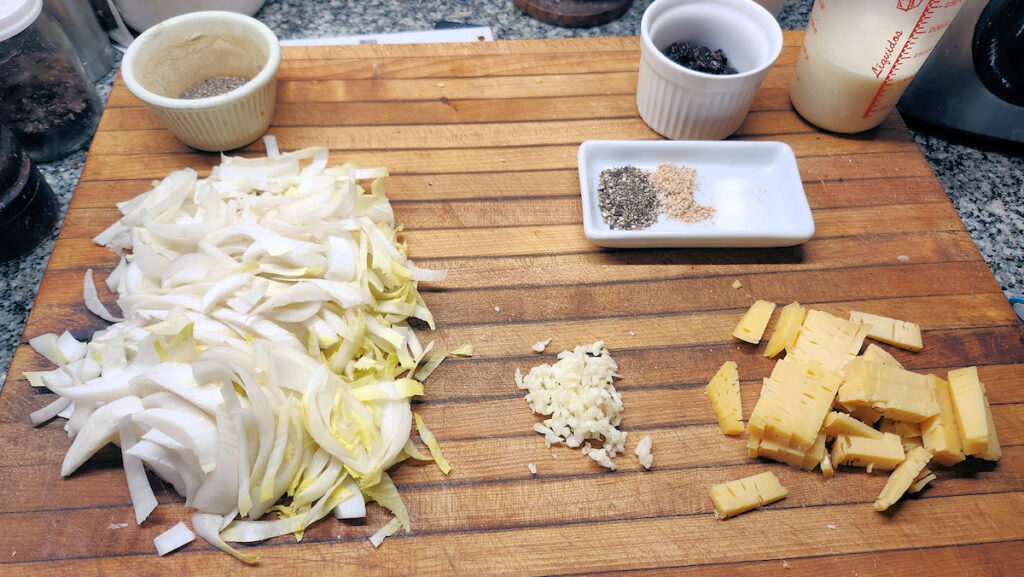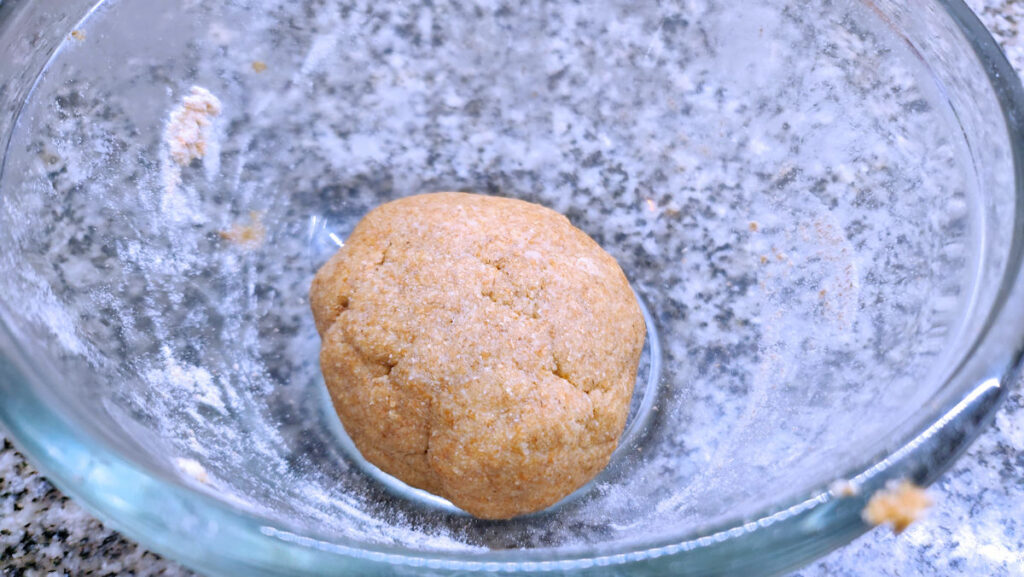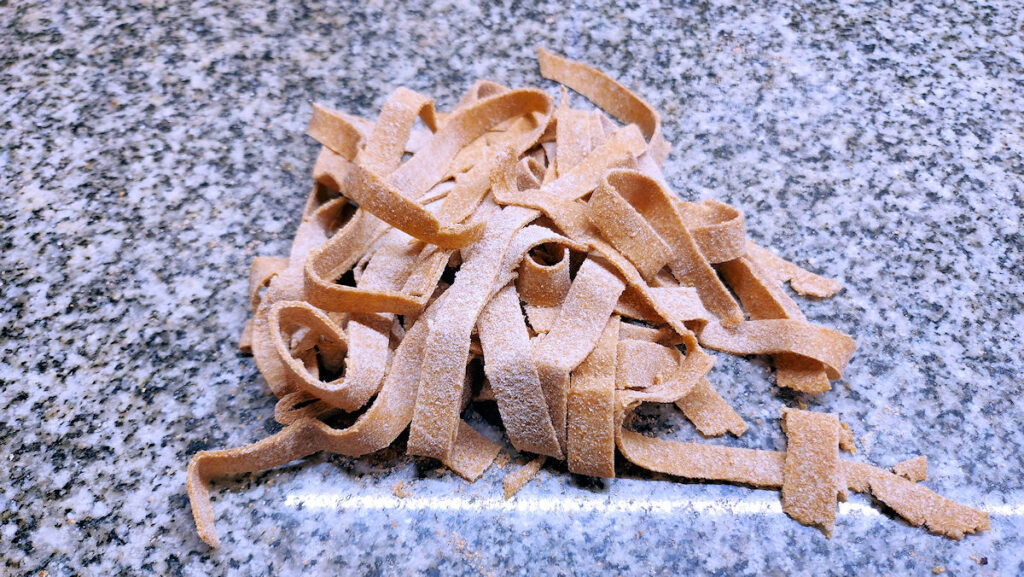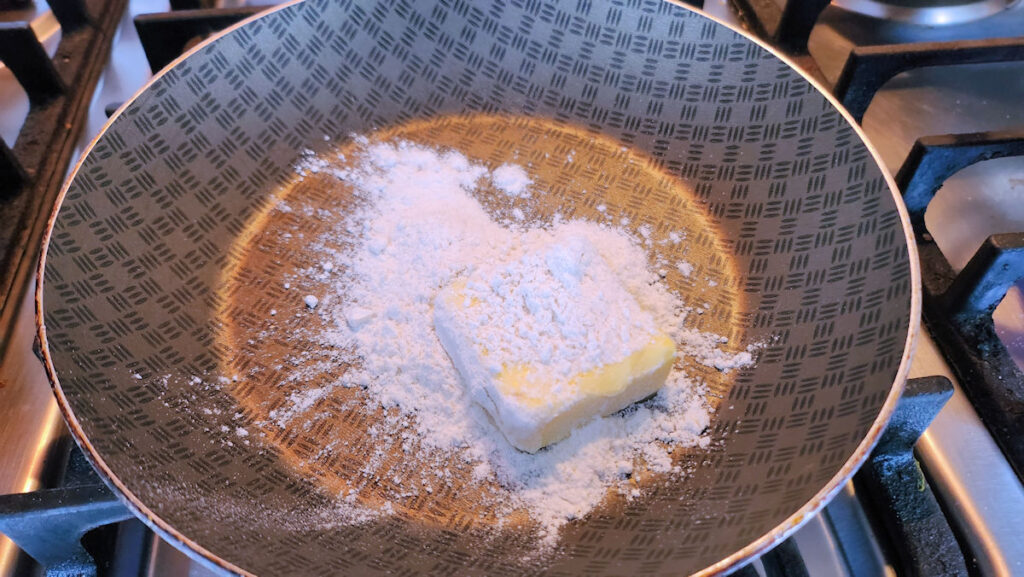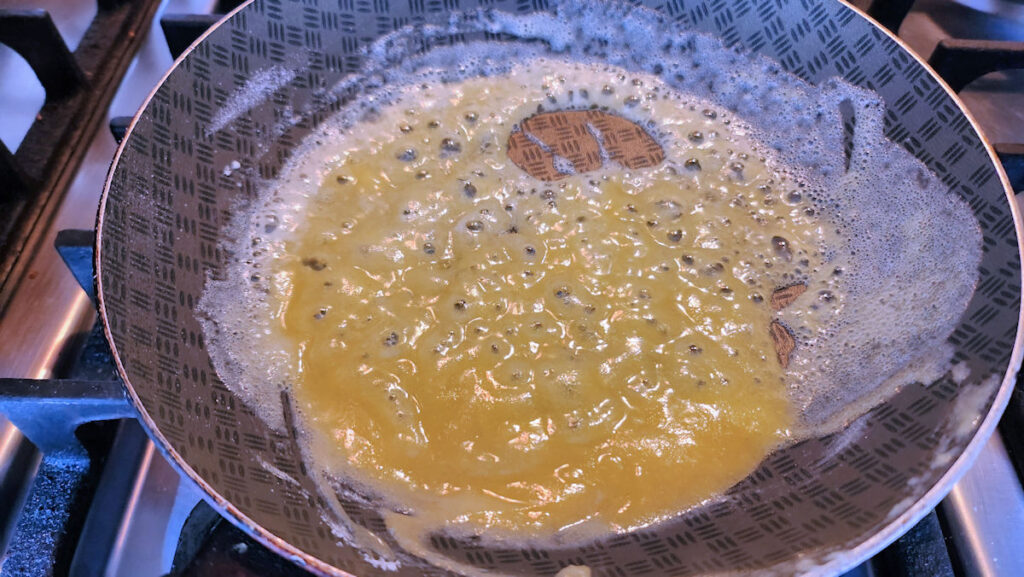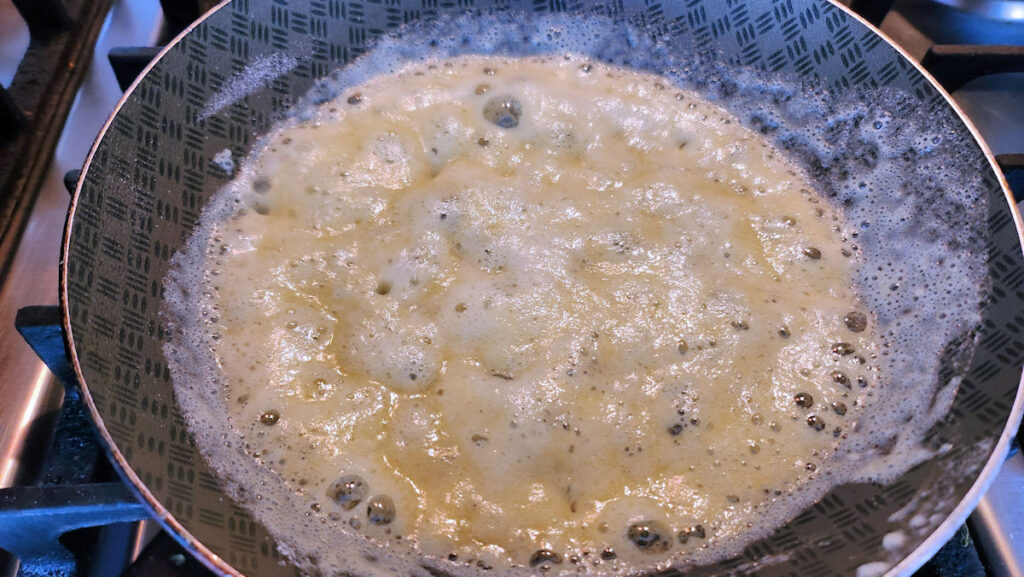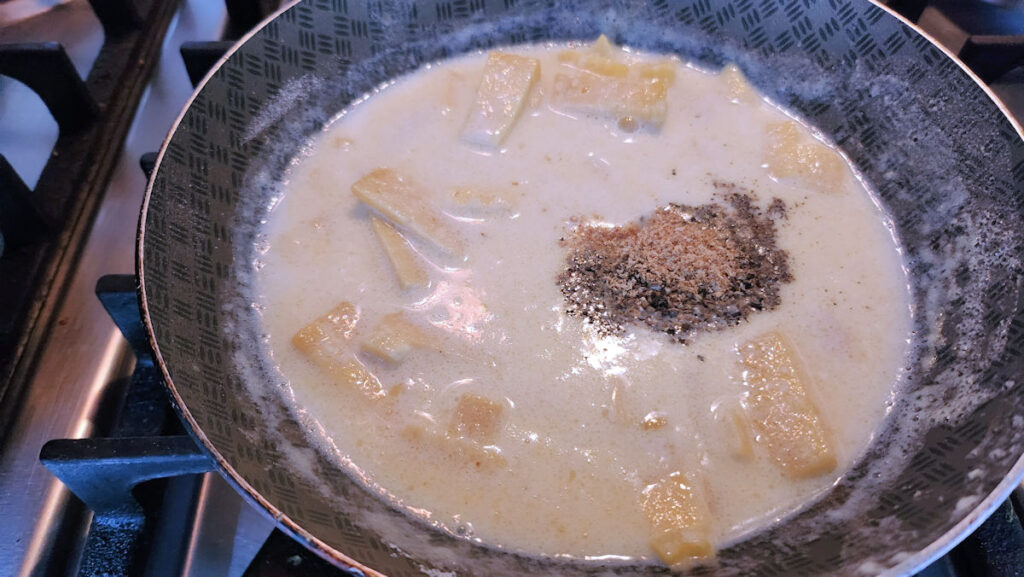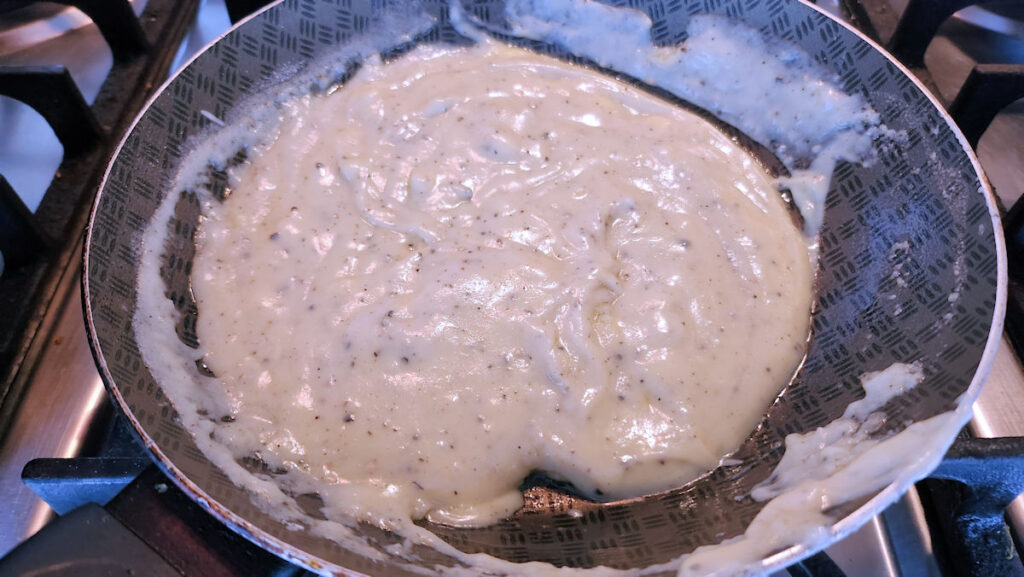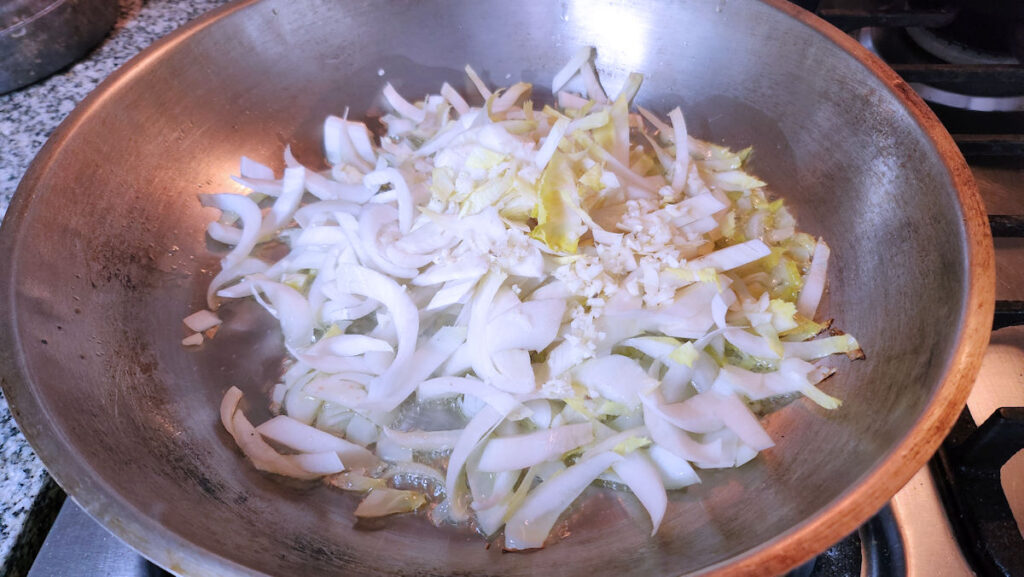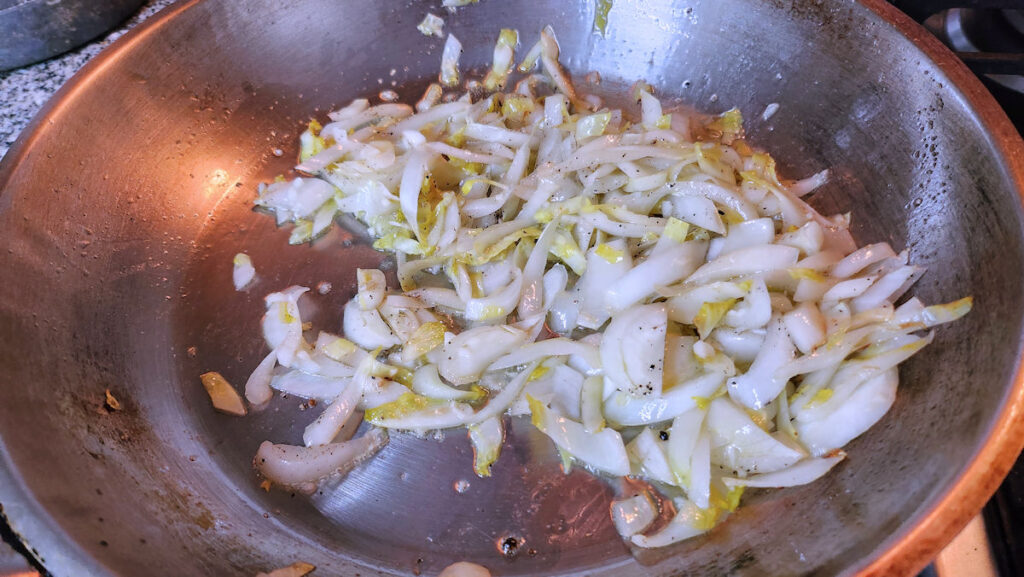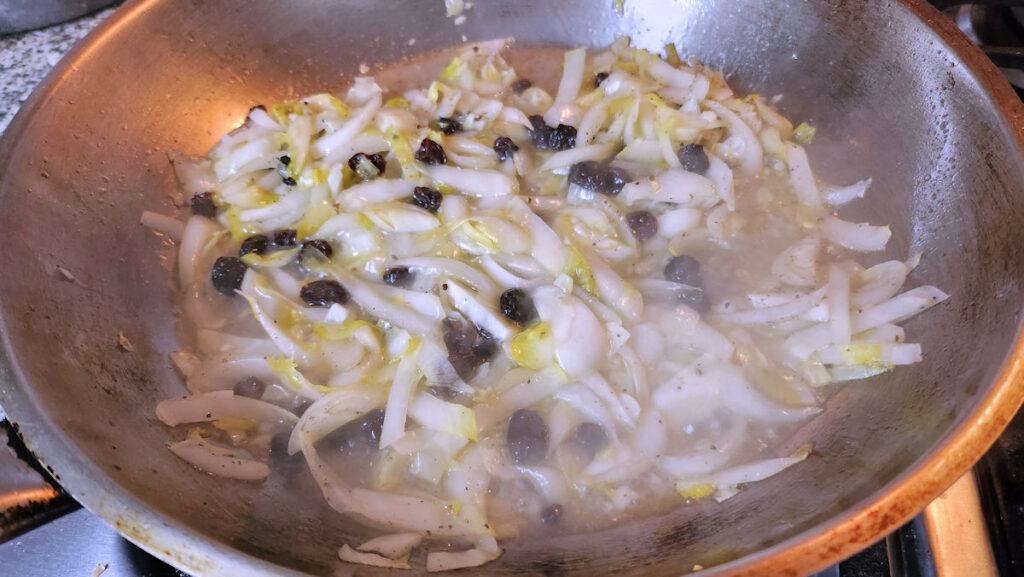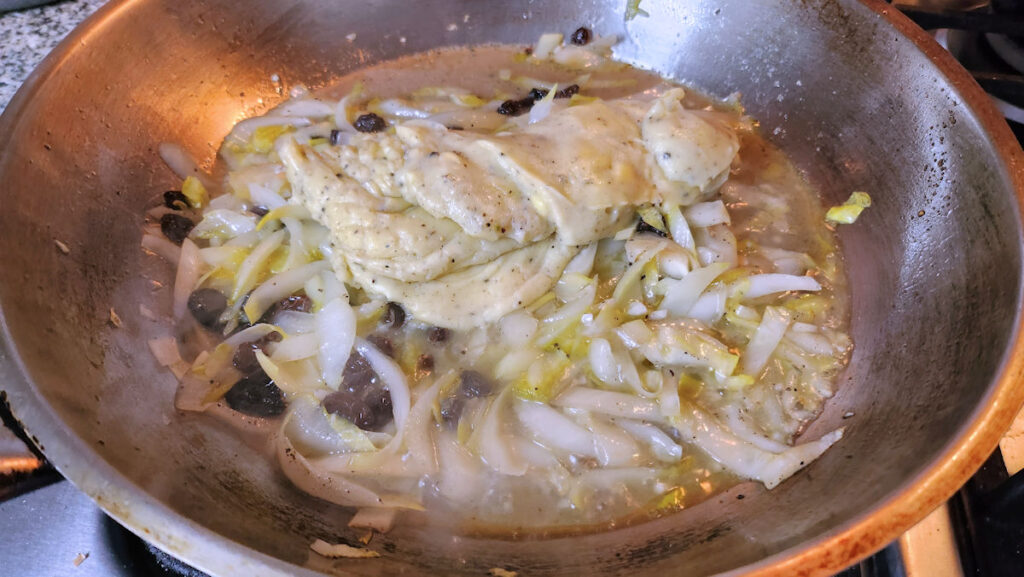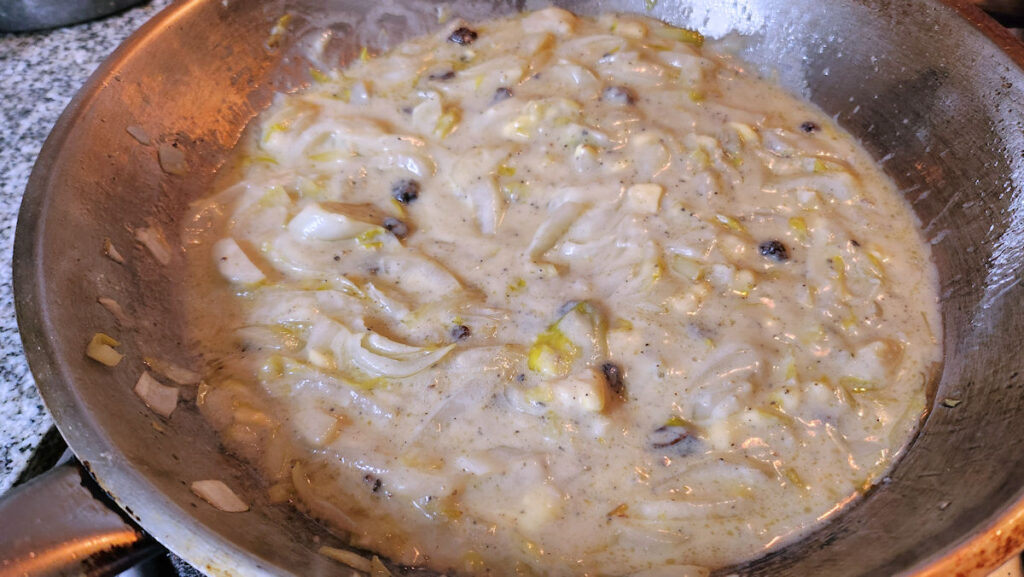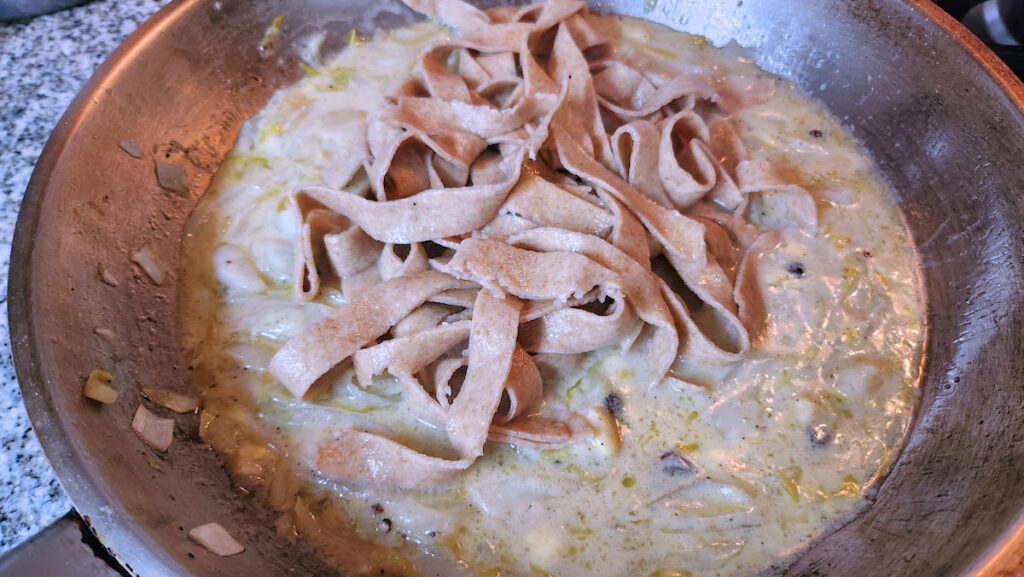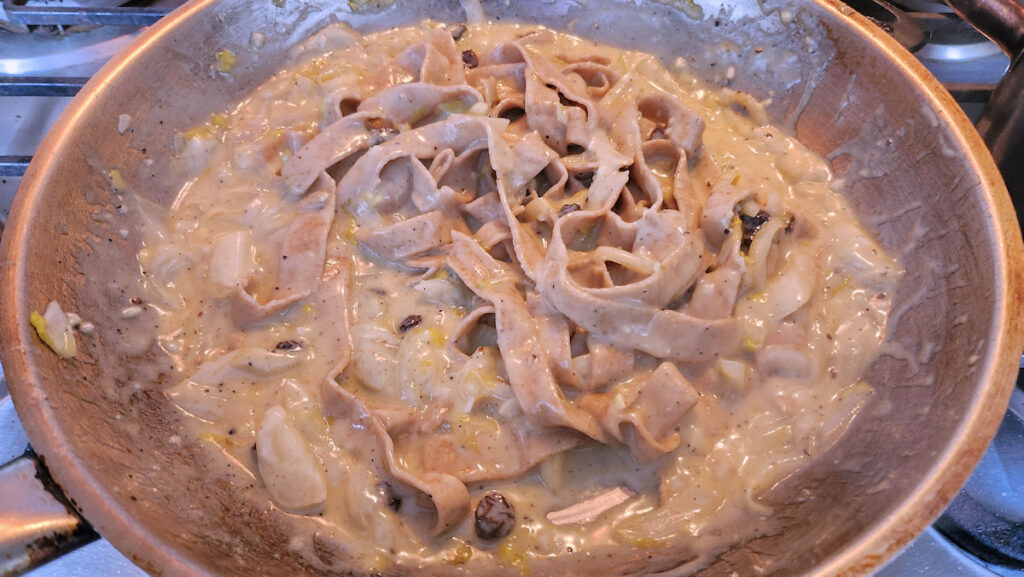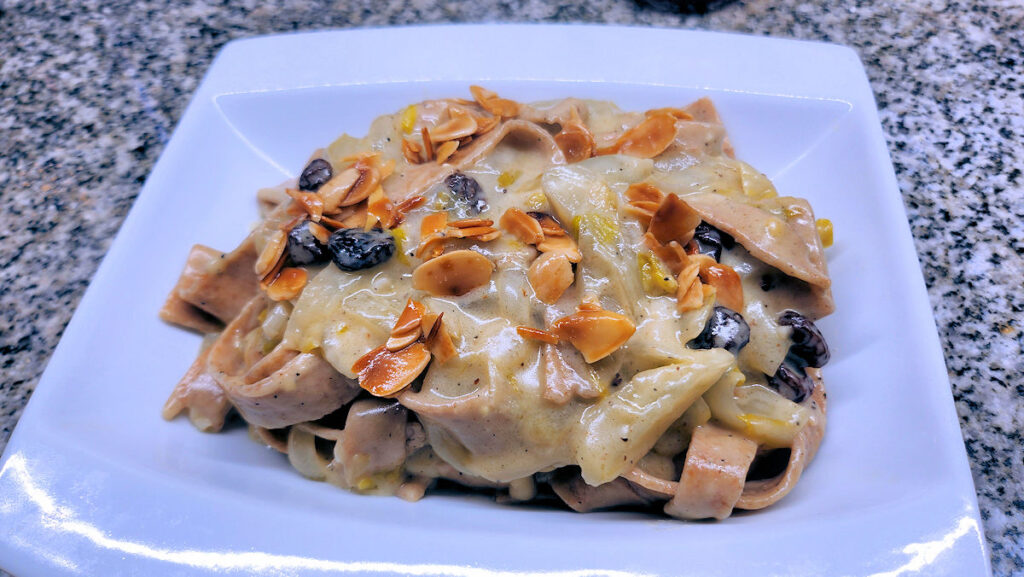We start with the cheese, the taleggio, a washed rind cow’s milk cheese from Lombardia, the province around Milan and Bergamo. Named for the Val Taleggio, or Taleggio Valley, this is one of the region’s most popular and best known cheeses. A personal favorite, and it makes for a great fonduta, a creamy cheese sauce, as in today’s recipe, which has the rather excessive moniker of Tagliatelle integrali con scarola e fonduta di taleggio – whole wheat tagliatelle with endive and taleggio cream sauce.
We begin, as always, with our various ingredients – whole wheat flour, egg, endive, garlic, raisins, milk, lots of freshly ground black pepper and some freshly grated nutmeg, butter, flour, taleggio, and toasted almonds. This recipe has numerous variations – often the pasta is made from a mix of chestnut flour and white pasta flour (1:3 or 1:4 ratio); the endive are replaced with broccoli; pancetta is added, or truffles are shaved atop, the raisins are replaced with sultanas, or sliced/diced fresh pears. This version, based purely on gut feeling, seems to be the most traditional approach, though I could well be wrong on that.
We slice up the endive, chop the garlic, and cut the cheese into small pieces to make for easier melting.
For every 100gm of whole wheat flour, 1 large egg. A little water will be needed to get it to come together. I was making a portion for two, so 100gm and 1 egg.
After letting it rest for about 20 minutes, rolled it out and cut it into tagliatelle, about a one centimeter width.
We start the fonduta with a roux – basically equal parts flour and butter here, over low heat. I had about 30gm of butter (1 oz) and 2 tablespoons of flour.
Stir it regularly to keep it from burning.
As the water in the butter boils off it will get very foamy, and then the bubbles will start to subside.
At this point add the milk, in this case about 150ml, a little over half a cup. Add a good amount of the cracked black pepper, the grated nutmeg, and the cheese.
Stir regularly – I just use a rubber spatula – until the cheese has all melted in, and the fonduta is nice and thickened. Not to worry that it seems overly thick, it’s going to be mixed with some of the pasta water until you get the consistency you want.
In a skillet, start cooking down the endive and garlic in a little olive oil, or butter (after all, there’s already butter and milk and cheese, so it wouldn’t be out of place). No more than a pinch of salt at this point – remember we’ve got the pasta water and the cheese to be added in later.
As it cooks, add in more of the cracked pepper. This is a good moment to drop your pasta in the boiling water. Note – if you’re using dried whole wheat pasta that will take longer to cook, I’d put it in at the time I started cooking the endive.
When softened and starting to color, add the raisins and a ladle of the pasta water. This will help plump up the raisins (some people prefer to rehydrate them a bit before, in either hot water, or hot wine.
Add the fonduta. Mix it in well, adding a little pasta water at a time until you have…
…a nice creamy sauce. As there are no other additions to come, this is a good point to taste for salt and pepper – add more if needed.
Add the pasta.
Mix well to combine and make sure the sauce clings to it.
Serve, garnished with the toasted or fried almonds. I fry them over low heat in just a little bit of olive oil.
Enjoy!
